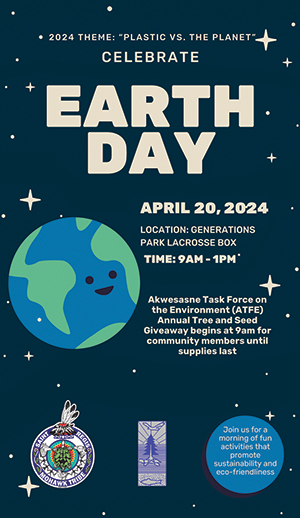The Facts of Lice
Head lice are small insects that live in people’s hair and feed on their blood. Lice glue their eggs—which are called “nits”—to the hair near the scalp, so they can’t get brushed off. The nits are small, whitish and oval, and may look like dandruff. In very light hair, they may look cream or tan-colored.
Lice are very common, and anyone can get them, though they most commonly affect children. Lice don’t spread disease, and having head lice is not a sign of uncleanliness or poor hygiene. If someone has head lice, their scalp will be very itchy.
What should you do when someone has head lice?
• If you or your child has lice or nits in your hair you should do something about it the same day.
• If you or your child has lice, he or she may spread it to someone else in the family, neighborhood or school unless they are properly treated.
• Notify others who have been in direct contact (head to head or sharing hair brushes, headgear, etc.) with your child. Remember to include schools, day cares, friends, relatives and neighbors.
• Make sure you check everyone in your family for nits or head lice. This should be done daily for 14 days. Only treat those family members where lice and/or nits are found and treat all persons at the same time.
• Do not use a lice treatment unless lice or nits have been found in that person’s hair.
• A child may return to school or day care after the first treatment is done and headgear, combs, brushes, etc. have been cleaned.
Head lice are spread by:
•Head to head contact with someone who has head lice.
•Sharing things that are in direct contact with a person’s hair such as combs, brushes, barrettes, ribbons, caps, hats, scarves, helmets, towels, pillows and coats.
• Children age 5 to 12 get lice more easily because their heads often touch when they play together.
How do you prevent head lice?
• Lice have trouble living in very short hair. Tie long hair back in a braid or pony tail. This makes it harder for lice to crawl from one person to another.
•Do not share things like pillows, towels, coats, caps, hats, or hair accessories.
•Keep children in separate beds on sleepovers. Change the sheets when a different person will be using them.
How do you know if your child has head lice?
• Check your child’s head in bright or natural light on a regular basis, and most importantly, if you receive a letter from your child’s class informing you of a case of head lice in the classroom.
• Look for nits by parting hair in small sections with a pointed object that will not scratch the scalp.
• Look close to the scalp for new nits. • Check all the hair carefully; go from
one side of the head to the other.
• Brush hair over a sink or towel.
• Hair conditioner that is white in color may help make eggs and lice easier to see but the conditioner must be completely removed before head lice treatment is used.
• Nit combs can be used to find lice.
One of the first signs of head lice is itching and scratching of the head. Adult lice move quickly, are different sizes and are hard to see. You may see the nits first.
Let’s look at some other facts about head lice:
•Lice are smaller than sesame seeds, have 6 legs and can move very quickly.
• Lice only live where they are warm and are usually found where there is a lot of hair, especially behind the ears and on the back of the neck.
•Lice are clear in color when hatched. Seven to 10 days after hatching, they become adult lice, which are able to lay eggs.
• Lice need human blood to live and multiply, and they look reddish brown after feeding.
• Lice do not hop, jump, or fly.
•Lice bites cause itching.
• Lice can live up to 48 hours off the human body.
•Pets cannot get head lice and people cannot get head lice from pets.
Treatment
It is important to follow all the treatment and cleaning steps outlined below on the same day.
• Do not treat unless there are lice and /or nits.
• You can buy supplies from the drug store. Sprays to clean the environment are not necessary.
•Make sure you have enough treatment for everyone in the family who needs it.
•Some lice products are NIXTM, R&CTM, and Kwellada-PTM.
• R&CTM is recommended for children under 2 years of age and pregnant and breastfeeding women.
•Natural and alternative treatments are not recommended until more studies show that they work.
• Nit combs should not be used alone to get rid of lice and nits but should be used with the lice product.
Please follow the package instructions, as each type of treatment is different.
• No treatment will kill all the nits when used for the first time.
•Wash the hair with plain shampoo
(no conditioners, etc.), baby shampoo, or dishwashing soap before treatment.
•Most lice treatments should be repeated after seven days. This includes NIXTM and Kwellada-PTM.
• Do not use less of the treatment than recommended. It will not work. Be sure to saturate the whole head of hair.
• Use more product for very long hair or thick hair.
Removal of nits from the hair may be helpful as it makes it easier to see new lice and nits.
• Pull off each nit by grasping it with your fingernails and sliding it off the hair strand.
• Throw nits into a garbage bag and seal it.
•Wet combing and metal nit combs may help to remove the eggs and lice.
• Check for and remove nits daily for 2 weeks.
Cleaning
Do not wear the same clothes that were worn before treatment or sleep in the same bedding until the clothes and bedding are washed.
•Clothes or bedding that may have been in contact with infested hair should be washed in hot water before they are used again. They can also be put into a hot dryer for 20 minutes.
• Items like teddy bears or winter coats that cannot be washed or put into a hot dryer should be put into a sealed plastic bag for at least 10 days. They can also be dry cleaned or frozen for 48 to 72 hours.
• Combs and brushes should be put into hot water for 15 minutes.
• Vacuum the couch, car seats, the bed or any pillows that the hair may have touched in order to remove live lice or hair with nits.
If you are not sure about any of this, ask your community health nurses for assistance.






Reader Comments(0)